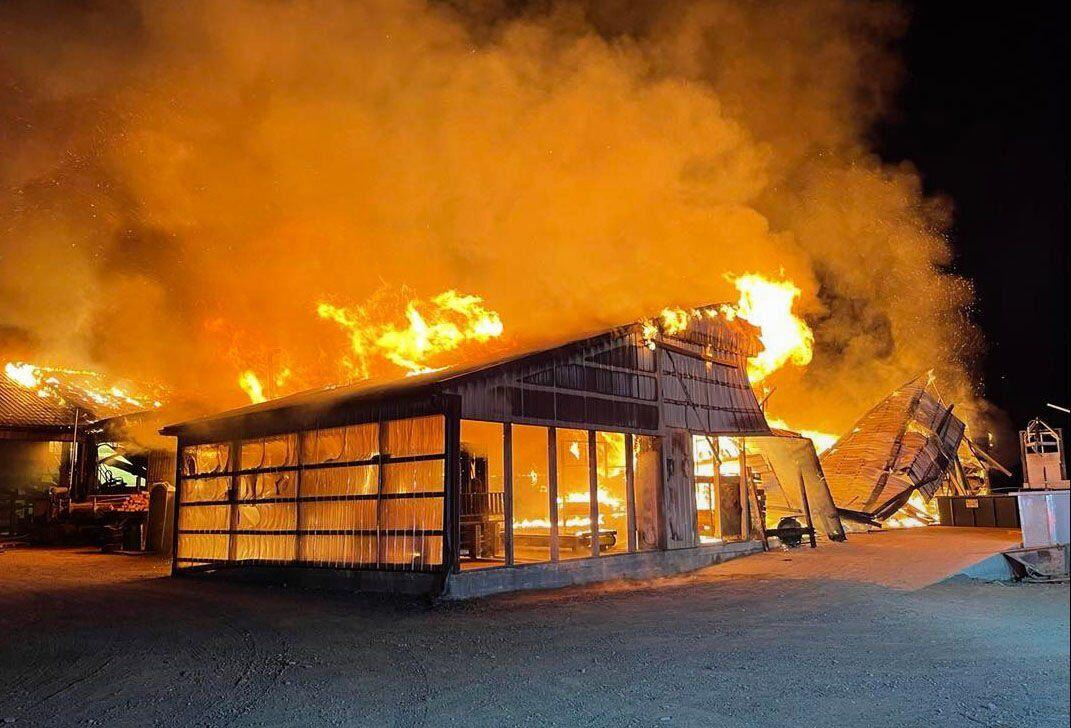Firefighters are battling a 2-alarm fire at Bieler’s Sawmill on Lancater Road (Rt. 272) in Providence Township, Wednesday May 25, 2022. The sawmill is on Rt. 272 next to Buck Iron Works, which is across from Buck Motorsports.
Disasters on the farm that threaten livestock are more than just disease and concerns. They can include unpreventable weather problems, like flooding or wind damage, but they can also be results of human error, like faulty wiring starting a fire.
Whatever the cause, there are ways to prepare in advance to help protect animals during misfortune.
Remove Combustibles
Liquids like pesticides, oil and diesel can all add fuel to the fire. These essentials should be stored outside of the barn to prevent further damage in the event of a spark, said Gregory Martin, a Penn State Extension agent and Extension Disaster Education Network contact person.
These substances put responding firefighters in added danger from an explosion, reducing their ability to rescue animals. Combustible items also put animals at a greater risk since they can cause flames to spread quicker.
Martin suggested keeping these items in their own building, such as a gazebo or storage shed that can be padlocked, keeping children out.
Establish Resource Supply
When the borough is out of power, cows still need to be milked. When harsh winds drop the temperature below freezing, animals still need to be kept warm.
Keeping additional resources on the farm helps sustain animals when normal life is interrupted, Martin said. He suggested keeping propane for heat, a well-maintained generator for power and water in case of fire.
Know How to Call
Whether it’s a fire, farm accident or medical emergency, knowing how to call and who to call for help is important. All staff on the farm need to be familiar with protocol for reaching emergency crew.
This includes all workers knowing the farm’s address. And farms need to be properly marked so responding personnel can get their quickly.
“You just can’t say, ‘Well, go down the lane where the old tree used to stand or where Jim’s barn used to stand and turn right.’ They don’t know that,” Martin said.
Keep Air Moving
While animals can weather poor air quality pretty well, it’s best to keep them in structures with moving air when particulates are ample, Martin said. Air shouldn’t become static.
This requires well-maintained fans and systems.
Prepare Financially
Having savings and insurance in place can prevent an unfortunate event from being the end of business.
Martin suggested having the applicable crop or livestock insurance for any disasters resulting in loss of yield. He also said life insurance can help a family proceed if a farm accident results in death.
In addition, private savings can help fund insurance deductibles and rebuilding efforts.
Planning ahead for disaster costs money. Farms must balance these expenses with what they could accumulate if a problem occurs.
“Yeah, you’re going to spend some money, but what’s the loss? What’s the value of the loss?” Martin said.
Source: lancasterfarming

